‘The Menu’ Explained: Questions Answered and Themes Explored
The Menu (2022) skillfully delivers ideas and themes that extend beyond what its story is about. This article explores those ideas while answering the biggest questions viewers may have about the movie.

Table of Contents
The Menu is a satirical thriller about a celebrity chef who prepares a masterpiece of culinary art with some disturbing surprises. On its surface, The Menu is a satire of the pretentious side of ultra-fine dining and of the class of people wealthy enough to experience such cuisine. However, the ideas presented in The Menu reach well beyond the culinary world. Read on for an examination of the movie’s themes, an FAQ covering basic questions to interesting plot points, and brief, non-spoiler review.
The Themes of The Menu
The Class Divide
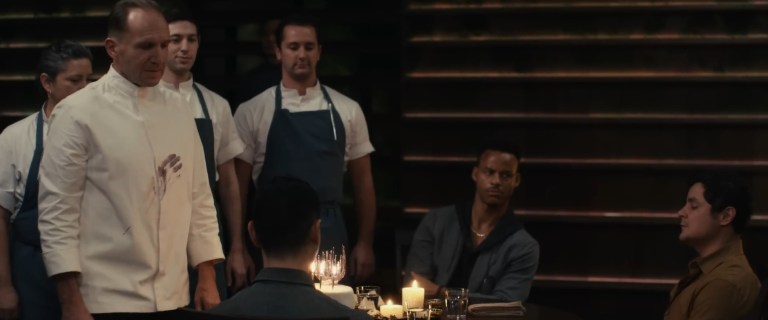
One of the major themes of The Menu is about classism and the disparity caused by wealth inequality. This is probably best represented by the trio of businessmen who are stealing from their company. When they are served a breadless bread plate, one of them demands to be served bread. Elsa, the headwaiter, flatly tells them, “no.” One of the businessmen tries to pull the “do you know who I am” card, but it doesn’t get him anywhere. He gets no bread, but he does get humbled. Even Slowik himself, who is rich to the point that money doesn’t even matter to him, is humbled by Margot’s continuing challenge of his authority. Of course Slowik is more aware of his own sense of self-importance than his guests, but he is still taken by surprise when Margot, somewhat mockingly, claps to get Slowik’s attention before asking for a cheeseburger.
Fine Dining as Pretentious Art
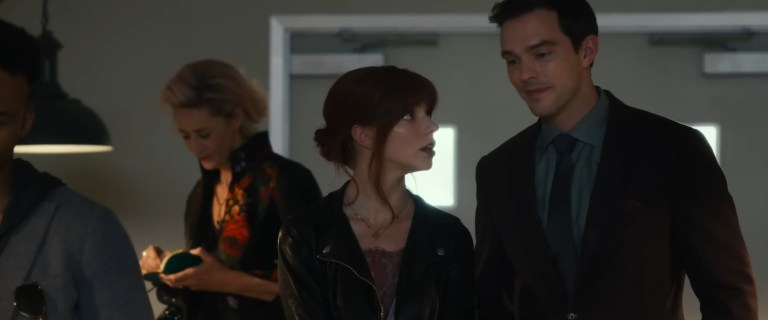
The Menu is also about the (sometimes) pretentious nature of ultra-fine-dining. Margot is the conduit for the audience, serving as a relatable presence among a group of characters whom most viewers may find ridiculous. The Menu isn’t necessarily saying that there isn’t an art to cooking, but it is saying that many people can get so carried away with assigning meaning to every minute detail that they lose sight of what it all means. Tyler, the obnoxious foodie, knows a lot about food, but he thinks there is only one way people should enjoy it. Tyler repeatedly tells Margot she’s not eating and enjoying her food correctly which is one way to completely strip the enjoyment out of food altogether.
The other side of ruining the experience of food is exemplified by the food critic Lillian (Janet McTeer). With the breadless bread plate, Lillian justifies it in her own way, arbitrarily assigning a value that Slowik may or may not have intended. Even worse, regardless of the value of the dish, she instead focuses on what she considers to be the worst part of the presentation. Lillian complains about a broken emulsion which is just one of multiple parts of the dish (and which we see Slowik intentionally check before it is sent to Lillian’s table, insinuating that he wanted it to be broken). Slowik then mocks Lillian by presenting her with an entire bowl of broken emulsion, which, by the way she goes on about it, is her “favorite” part of the dish. So, like the self-assured foodie, the self-important critic can also ruin the joys of eating good food.
Expanding the Themes

These themes are readily apparent in The Menu, but what’s great is that the ideas can be extended to other forms of art. Since The Menu is a movie, it’s not hard to transpose the ideas about pretentiousness in the food world to pretentiousness in the film world. Tyler the obnoxious foodie is like the arrogant cinephile on social media chastising people for enjoying a movie they personally don’t like. They’re the same kind of person who lauds a particular film, and if you disagree with them, you just don’t understand what the movie is really about.
Also, Lillian the food critic is like a famous film critic or internet-famous influencer. Just because their voice is amplified, that doesn’t mean their words should necessarily hold more weight than anyone else. Art, whether it’s made up of food or film, is largely subjective. And sometimes you don’t want a meticulously crafted arthouse film. Sometimes you just want something simple and comforting like a formulaic slasher movie. It’s like the difference between fine-dining and a slab of meat and cheese in a bun. Both can be great, but when you lose your ability to enjoy the simple pleasures of whatever kind of art you’re into, you should maybe think about why you’re still into it at all.
The Menu Ending Explained
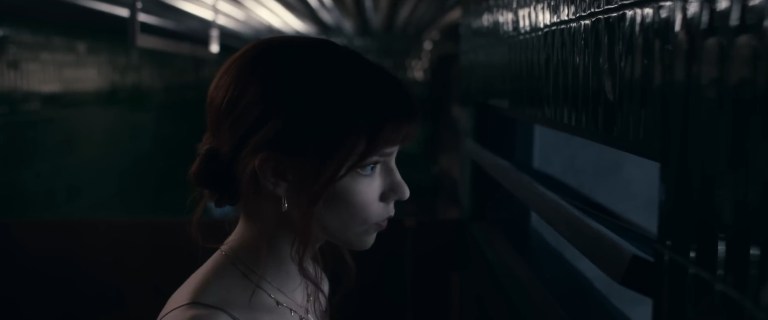
Chef Julian Slowik is an artist who doesn’t feel joy in what he does anymore. As a chef who has the money and freedom to create absolutely anything he wants, he has reached the peak of his career. Unfortunately, he is unfulfilled. The higher he rose in the food world, the less he felt appreciated. He realizes that he is partly to blame for his own feelings, but he also blames the people he technically works for: the rich, elite guests who are the only people who can afford to eat his food.
Slowik’s plan for the evening is to confront each of his guests with their sins and their roles in harming others (i.e. harming Slowik and his art). Slowik feels that the people he feeds night after night have ruined his art, the only thing he ever truly loved. They have taken something that is supposed to be about taste, pleasure, and sustenance, and turned it into a joyless exercise in maintaining their elite status. Or, like the food critic, they’ve devoted their lives to scrutinizing the work of others which can have disastrous effects. Or, like the movie star, they’ve compromised their own art for money. Slowik wants to free himself, his guests, and his staff from their misguided lives with his final masterpiece which will end with everyone being burned alive. In death, they will all be free.
In the end, Chef Slowik succeeds in his plan to set eleven of his twelve guests free through death. After Slowik allows Margot to leave the restaurant, Slowik prepares the dessert course: an elevated version of s’mores. Slowik’s staff fit each of the remaining guests with a coat made out of marshmallows, and they spread chocolate and graham cracker dust throughout the dining area. With Slowik in the center, the dining area is set on fire. Everyone inside the building is cooked, with the guests, staff, and Slowik himself all literally becoming a part of the Chef’s final dish. It is his masterpiece.
Meanwhile, Margot takes a boat and attempts to guide it away from the island towards the mainland. The boat runs out of gas, but Margot isn’t worried. She made it out, and she is safe. She also has a new outlook on life thanks to her near-death experience. Margot sees the blaze erupting Slowik’s island, so in the light of the fire, she sits on the deck of the boat savoring the remainder of the cheeseburger Slowik made for her. Some viewers have speculated that Slowik possibly poisoned the burger, but there is no reason to think that’s the case. Instead, the burger is probably the best thing Margot ever tasted. It is her victory meal after outsmarting the Chef and, frankly, being the smartest person in the room all night.
The Menu Cheeseburger Explained
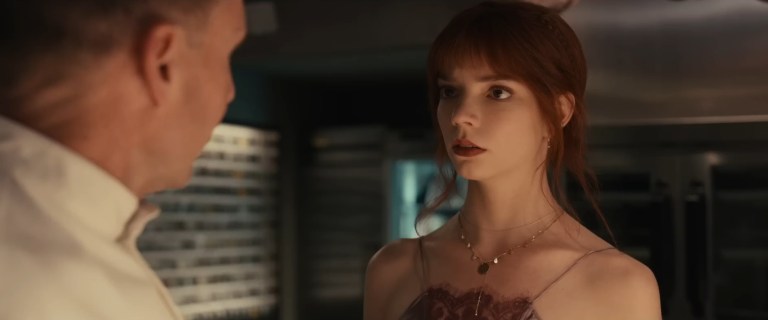
When Margot is sent on an errand by the Chef, she sees a photograph of Slowik when he was younger. In the picture, Slowik is making a cheeseburger. He looks happy, like someone who actually enjoys cooking for the sake of cooking, and for the enjoyment it brings to his customers. Margot uses this knowledge to her advantage by ordering a cheeseburger with no pretension. By ordering it to go, he has to let her go because she genuinely is enjoying her meal and wants to finish it.
As a symbol, the cheeseburger represents, in part, honesty and integrity. It’s comfort food created with heart. The cheeseburger is the only thing we see Slowik make completely by himself in The Menu, and it reminds him of how much joy he used to take from cooking. It’s a meditative experience that helps him see that he was wrong about Margot. She’s not like everyone else in the dining room. Margot doesn’t need to join the rest of the group in death in order to be freed from her own faults. Slowik sees that Margot has come to understand what she needs to do to turn her life around before she becomes hopelessly jaded like Slowik.
As Marot escapes from Slowik’s island, the boat she’s on runs out of gas. Margot looks back to see the restaurant Hawthorne burning, and she knows everyone is dead or dying. Now safe and with her whole life ahead of her, Margot sits down and continues eating the cheeseburger. Satisfied, she uses Chef Slowik’s menu as a napkin, wiping the burger’s grease from her mouth. It’s a delicious victory for Margot. Also, if you want to attach some symbolism to it, using the menu as a napkin implies that Chef’s entire multi-course meal isn’t worth the paper its printed on.
The Cast of The Menu

Just about every character in The Menu has a secret. What’s not a secret is how good the actors are who brought these characters to life. Below is a list of the main cast, but for a more in-depth look at the cast, characters, and their secrets, check out our cast and character guide for The Menu.
- Ralph Fiennes as Chef Julian Slowik
- Anya Taylor-Joy as Margot
- Nicholas Hoult as Tyler
- Janet McTeer as Lillian Bloom
- Paul Adelstein as Ted
- John Leguizamo as George Díaz
- Aimee Carrero as Felicity
- Reed Birney as Richard Liebbrandt
- Judith Light as Anne
- Mark St. Cyr as Dave
- Rob Yang as Bryce
- Arturo Castro as Soren
- Hong Chau as Elsa
Frequently Asked Questions

Even though the story in The Menu is rather straightforward, the movie may leave a few lingering questions for viewers. While specific character motivations are always open to interpretation, here are our answers for a few of the film’s more pressing questions. Major spoilers from here on out in the article, obviously.
Is The Menu streaming on Netflix or any other platform?
The Menu had a theatrical release and was distributed by Searchlight Pictures. It is now streaming on HBO Max. You can stream it here.
Will The Menu be on Netflix?
It’s highly doubtful The Menu will ever stream on Netflix. It will likely stay on HBO Max.
What genre is The Menu?
The menu would best be described as a black comedy thriller. Some may refer to is as a black comedy horror film, but the horrific elements of the movie are few and far between.
Why is The Menu movie rated R?
The Menu is rated R for for strong/disturbing violent content, language throughout, and some sexual references.
Though there isn’t much blood spilled in The Menu, there are violent scenes involving a shooting, stabbings, and a drowning. Adult material is discussed and adult language is used throughout.
How scary is The Menu movie?
The Menu is not a scary movie, though it does contain some disturbing elements such as suicide and emotional abuse.
Does The Menu have jump scares?
There are no jump scares in The Menu. The one possible exception is caused by the suddenness of a somewhat disturbing scene.
Spoiler: At the beginning a certain course, one of the cooks from the kitchen shoots himself in the head. This happens suddenly and, naturally, with a loud noise. Though not really a jump scare, it can have the same basic effect on people.
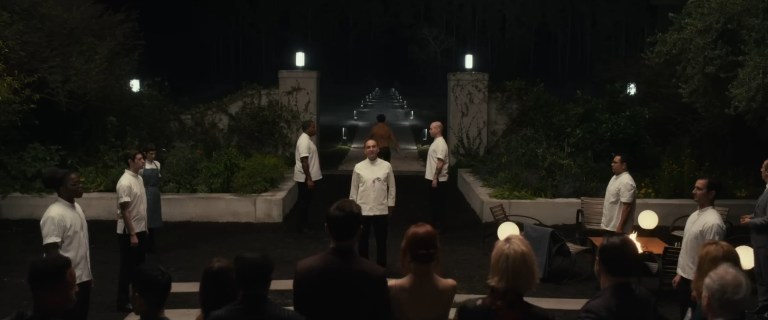
Why don’t the diners just leave?
Slowik’s guests do talk about leaving once they realize the night is going in a bad direction. George (John Leguizamo) suggests to the trio of tech businessmen that they should all get together and force their way out. At that point though, they’re still not quite sure what is happening. And for the tech bros, they also know Slowik has information that could put them in jail, so they need to play things carefully. Plus, most of the guests likely feel that their money and status mean that nothing bad could really happen to them.
Even so, Richard (Reed Birney), the older businessman who was cheating on his wife, does try to leave at one point. He gets his finger cut off for his trouble. The male guests are later offered a chance to run, and they are all easily caught and brought back. Also, even when Margot calls the Coast Guard, it’s revealed that the officer who arrives is working for Slowik. So, all of these factors add up to making the guests feel like escape is impossible, which is probably true.
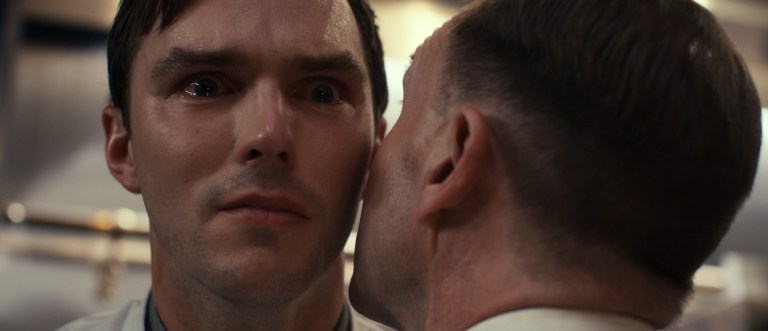
What happened to Tyler?
Tyler, the arrogant foodie played by Nicholas Hoult, is the only diner to die before the dessert course. He is also the only diner who knows the meal will end with death. Tyler feels like he knows more about food than most people, and his condescending tone when speaking to Margot gets worse and worse throughout the night. Tyler is desperate for the attention and approval of Chef Slowik, and Slowik uses that against him.
Chef tells Tyler that he does know a lot about food, and that he belongs in the kitchen. Slowik gives Tyler a chef’s coat, writes his name on it with marker, and urges Tyler to prepare a meal himself. Tyler fails horribly, bumbling through the process of trying to cook lamb. Slowik then tells Tyler that he is the reason why “the mystery has been drained” from the culinary arts. Slowik then whispers something inaudible to Tyler, and, clearly distraught, Tyler leaves the kitchen. The next time we see Tyler he is dead, hanging from his neck in a backroom.
The whole process of inviting Tyler into the kitchen was to expose him as a fraud and to publicly humiliate him. Tyler always puts himself above others because of his sense of superiority, so Slowik humbled him by showing everyone that he has no practical knowledge of what he professes to love. Instead, Tyler is like someone who exposes how magic tricks are done, ruining the magic for everyone else while making himself feel smart. He’s a gatekeeper who keeps other people from enjoying the art of dining (like he does with Margot all night).
What did Chef Slowik whisper to Tyler? That is open to interpretation. Whatever Slowik says to Tyler in the whisper must have been harsh. Tyler was already humiliated, so whatever Slowik said must have been even more personally devastating. As a guess, Chef Slowik probably told Tyler that he is disappointed in him, not only for failing to truly understand what Slowik does, but for flaunting the rules of Hawthorne and possibly ruining what should be Slowik’s greatest achievement.
By this point Slowik was starting to feel something resembling respect for Margot, at least as far as knowing she didn’t necessarily belong with the other diners. So, Tyler’s treatment of Margot, especially him inviting her knowing she would die, prompted Slowik to deal with Tyler more harshly than any other diner. That, plus the fact that Margot’s presence threatened to derail Chef’s carefully planned evening. There are no substitutions in Slowik’s kitchen, but Tyler brought a substitution with him in Margot. That was almost like a slap in the face for Slowik. For those reasons, Slowik broke Tyler down to the point that he went and killed himself which was never part of the dinner-plan to begin with.
Why does Chef Slowik allow Margot to leave?
Slowik and Margot (whose real name is revealed to be Erin) share a bond in that they both work at the behest of rich clients. Slowik creates works of culinary art for them, and Margot works as an escort. Slowik isn’t always sure about how to deal with the fact that Margot isn’t like everyone else in the dining room, but he does make it clear that he doesn’t intend for anyone to leave his island alive. That changes when Margot discovers the picture of Slowik as a young cook working in a diner flipping burgers.
The Slowik in the picture has a genuine smile on his face, and Margot’s request of cheeseburger reminds Slowik of a time when he actually enjoyed cooking for people. It was a simple time when he made the food himself (rather than delegating to his staff), and his diners enjoyed the food in an uncomplicated way. Slowik knows that he can’t go back to those times, but he also knows that Margot doesn’t have to end up like he did. Margot still has the chance to avoid becoming irreversibly cynical like him.
Slowik’s entire evening was designed to free his guests of their burdens. To cleanse their sins with fire and set them free. Margot didn’t need to die though. She had set herself free in Slowik’s eyes because, while the other guests were blinded to the art of his cooking, Margot saw through it all night. She realized that Slowik was often mocking them with his food when everyone else was either oblivious or too obsessed with the finer details to notice. Margot understands Slowik, and the cheeseburger proved that.
How does The Menu movie end?
As stated above, Margot is allowed to leave after ordering a cheeseburger and asking for it to go. As Margot escapes by boat, everyone else is immolated in Chef’s dessert course, deconstructed s’mores. Diners are forced to wear marshmallow necklaces and chocolate hats, crushed graham crackers are poured throughout the dining room, and the entire restaurant is set on fire with everyone in it. Margot is the only survivor.
What is The Menu movie based on?
The Menu is an original idea which is not based on any previous work or true event. One of the film’s writers, Will Tracy, explained in an interview that the idea came to him while dining in an exclusive restaurant in Norway. Like the restaurant in The Menu, the restaurant Tracy visited was on an island and only seated about 15 guests. Tracy began to imagine what might happen if something went wrong in a place like that, and that’s where the idea for The Menu started.
The Menu Review

This review begins with a promise: food puns and cooking metaphors will be avoided whenever possible. For one thing, too many other reviewers and commenters have already done that. It’s almost like it’s expected at this point. But also, it seems like trying to be too clever for your own good is one of the things The Menu is laughing at. The Menu would also mock most attempts at trying to intellectualize the movie’s merits and faults too much, and that puts someone who makes their living analyzing and writing about movies in an awkward position. That effective dissection of the relationships between artists, consumers, and critics is the biggest reason why The Menu works so well.
Ralph Fiennes stars as Julian Slowik, a chef whose status has grown to such an elevated position that his food is unattainable by all but the richest of people. The Menu takes place during an evening on Chef Slowik’s private island where he has cultivated a cult-like following from a small group of live-in cooks and servers. Slowik has twelve guests for dinner this evening at his restaurant, named Hawthorne, and his multi-course meal is meticulously planned with each and every guest in mind. However, there is one person among the twelve who may ruin his plans.
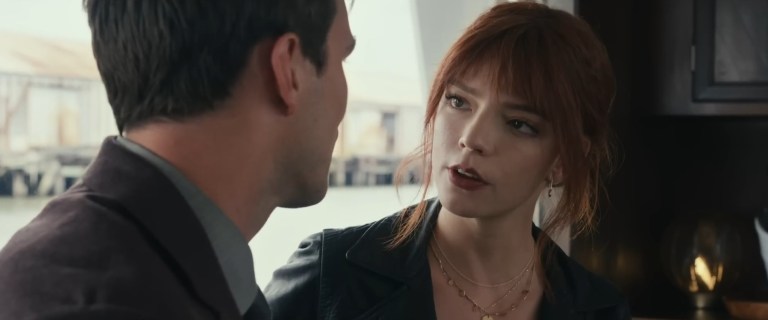
Anya Taylor-Joy is Margot, a diner who we learn early in The Menu is not on the guest list. Margot is the last-minute guest of Tyler (Nicholas Hoult), a fawning fanboy of Slowik’s whose obsession with food is in stark contrast to Margot’s own indifference to the whole fine-dining event. Margot’s unexpected presence threatens to ruin Chef Slowik’s carefully planned evening, especially when she becomes the only person to really challenge the Chef and his “art” when each course gets successively more outlandish.
To say any more about the plot would ruin the experience, but this basic setup is enough to get a sense of what the movie is going for. The Menu is a satirical thriller that uses strong performances from great actors to elevate the material into something quite interesting and fun. The characters in the movie are largely stereotypes (a snobby critic, a washed-up actor, an obnoxious superfan, thieving businessmen, etc.), but every cast member makes the movie work well when it might have fallen flat otherwise.

It should also be noted that the cinematography is excellent. It’s no small feat to keep viewers visually interested in a movie that takes place mostly inside of a single room that is dominated by grays and blacks. Nothing feels bland or repetitious. On the contrary, The Menu does a great job of building suspense and tension in part by filling every shot with plenty of background information. What are the people at the other table talking about? Why did that waiter move behind those people? What is the Chef staring at? It’s all very well done.
Most importantly though, the story is told in an interesting way. You may think you have an idea of what is going on in The Menu from its trailers, but then again, it may not be what you think. There are no big surprise twists to cheapen the experience here. The movie tends to drop hints (and sometimes flat-out tells you what’s going to happen) to increase suspense, and every twist and turn comes from character-driven moments. That helps make the finale of The Menu feel satisfying rather than surprising, which is a smart way to do a movie like this. The Menu is an intelligent, stylish, and funny thriller that understands the value of a straightforward plot executed well.
